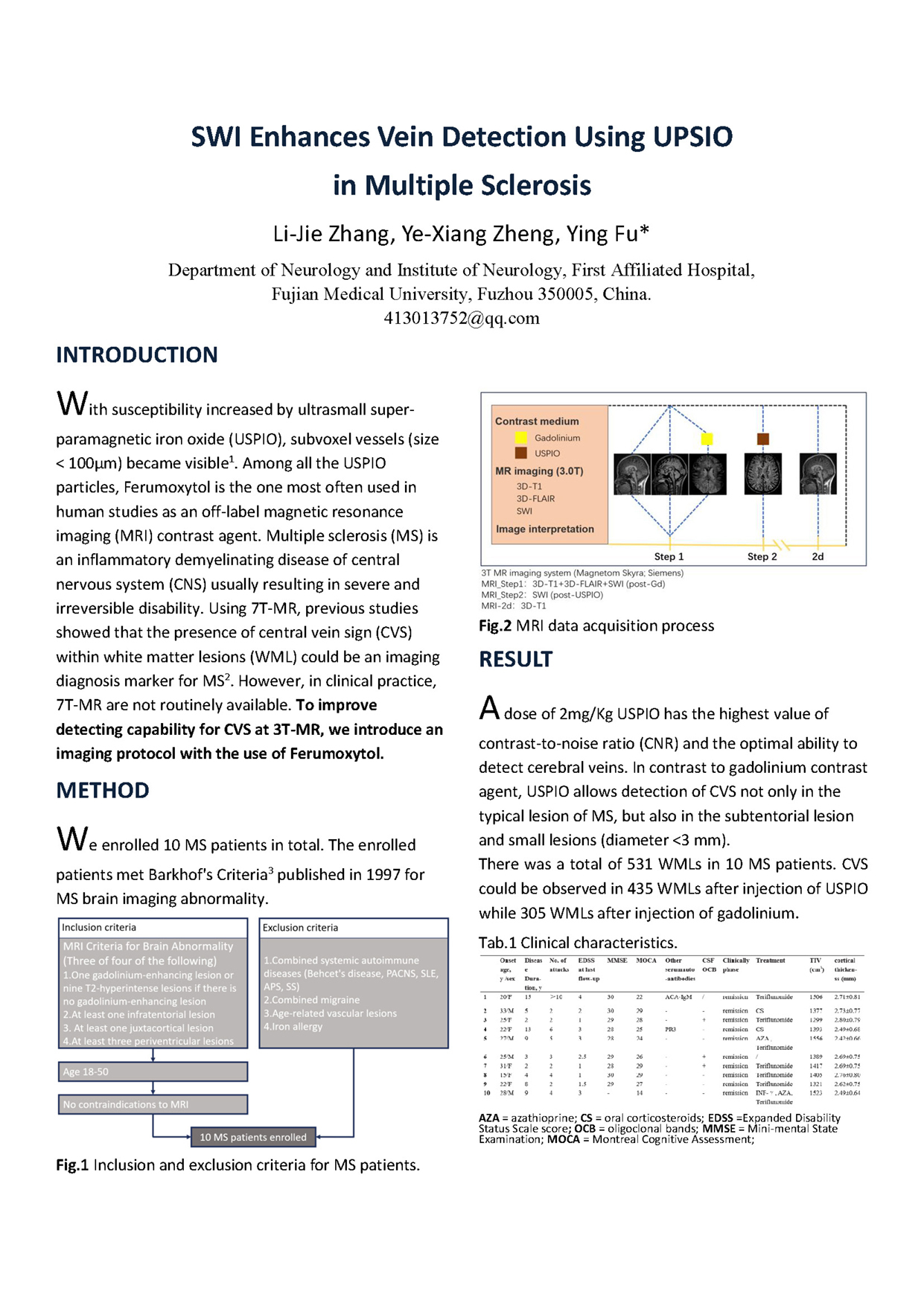SWI enhances vein detection using UPSIO in multiple sclerosis
Abstract
Ultrasmall superparamagnetic iron oxide (USPIO) nanoparticles are an emerging category of MRI contrast agents that seem to play a vital role in the imaging of central nervous system (CNS) . Multiple sclerosis (MS) is a chronic multiple inflammatory demyelinating disease of the CNS that usually results in severe and irreversible disability. Previous studies at 7T have shown that the presence of the central vein sign (CVS) within white matter lesions is a marker of MS. Further investigations that CVS has been the differential diagnosis of MS are needed. However, 7T scanners are not routinely available in the clinical setting. The aim of this study was to depict in vivo the CVS when using USPIO to enhanced vein imaging at 3T scanners. In MS white matter (WM) lesions, USPIO can increase vein signal loss on Susceptibility weighted imaging (SWI) . SWI combined with the FLAIR sequence enables the value of CVS. We completed an evaluation of 10 MS patients. We found that UPSIO increased the contrast between the parenchyma and the central vein compared to gadolinium contrast, to the extent that it improved the detection of central venous signs. It was also able to enhance the detection of CVS in subtentorial WM lesions as well as small lesions (diameter <3 mm) .
KEY WORDS:
central vein sign (CVS), Ultrasmall superparamagnetic iron oxide (USPIO), 3T

